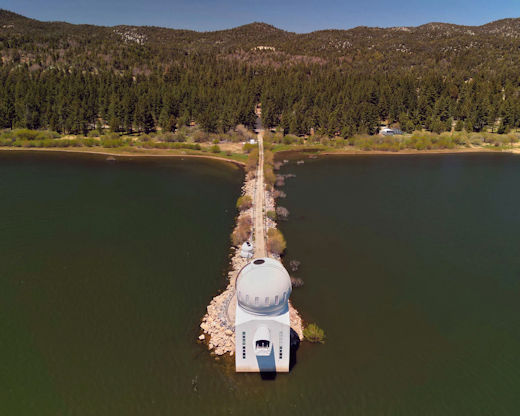A HIDDEN WORLD OF SOLAR ACTIVITY: In the 17th century when Anton van Leeuwenhoek looked through a microscope and saw bacteria for the first time, he revealed a new "world of the small" and forever upended the field of biology. Is the same thing about to happen to solar physics?
Maybe. A paper just published in Nature Astronomy reports a new technology for seeing very small things in the atmosphere of the sun. It's a system of adaptive optics that corrects for turbulence in Earth's atmosphere. A test run in July 2023 on the 1.6 m Goode Solar Telescope in California's Big Bear Lake produced an immediate discovery:
"We became astounded witnesses to a
strange, short-lived object," recalls the research team, led by
Dirk Schmidt of the NSF National Solar Observatory. "We call it a
twisted plasmoid."
The plasmoid is unlike anything seen inside the sun's atmosphere before. NASA's Solar Dynamics Observatory was observing at the same time
and saw nothing. The Big Bear adaptive optics system is so good
at correcting turbulent blur, it outperforms space telescopes.
A movie of the plasmoid shows a narrow
stream of plasma less than 100 km wide moving like a flagellate under
van Leeuwenhoek's microscope. The front of the stream "suddenly stopped
and collided with its own rear half," before fading away. Other
structures observed by the team may be as narrow as 20 km across.

The
1.6-meter Goode Solar Telescope in Big Bear Lake. The steady
temperature of the water surface helps keep the air around the telescope
calm
It's not clear whether this is a significant discovery or just something idiosyncratic and weird. We'll soon find out. The researchers plan to install the same system on the giant Daniel K. Inouye Solar Telescope in Hawaii, where adaptive optics on its 4-meter mirror could reveal an even greater menagerie. Let the plasmoid hunt begin!
For more images from the new adaptive optics system, click here.









No comments:
Post a Comment
you got something to say... please say it